Key Takeaways
✅ Increased Efficiency and Productivity: Embrace the robotic revolution and watch as your supply chain and manufacturing processes transform into a model of efficiency. With robots performing tasks at breakneck speeds, learn how to trim timelines and skyrocket your productivity metrics. Ready to see those output numbers soar?
✅ Improved Quality and Consistency: Tired of playing the guessing game with your product quality? Robots are here to deal winning hands every time, reducing errors and ensuring your goods meet the highest standards. Discover the secrets to keeping customers satisfied with consistency they can count on.
✅ Enhanced Safety and Ergonomics: It's time to put safety first and automation makes it easier. Robots take on the jobs that are riskiest, allowing humans to step back from harm's way. Find out how this shift can create a better work environment and happier, healthier employees.
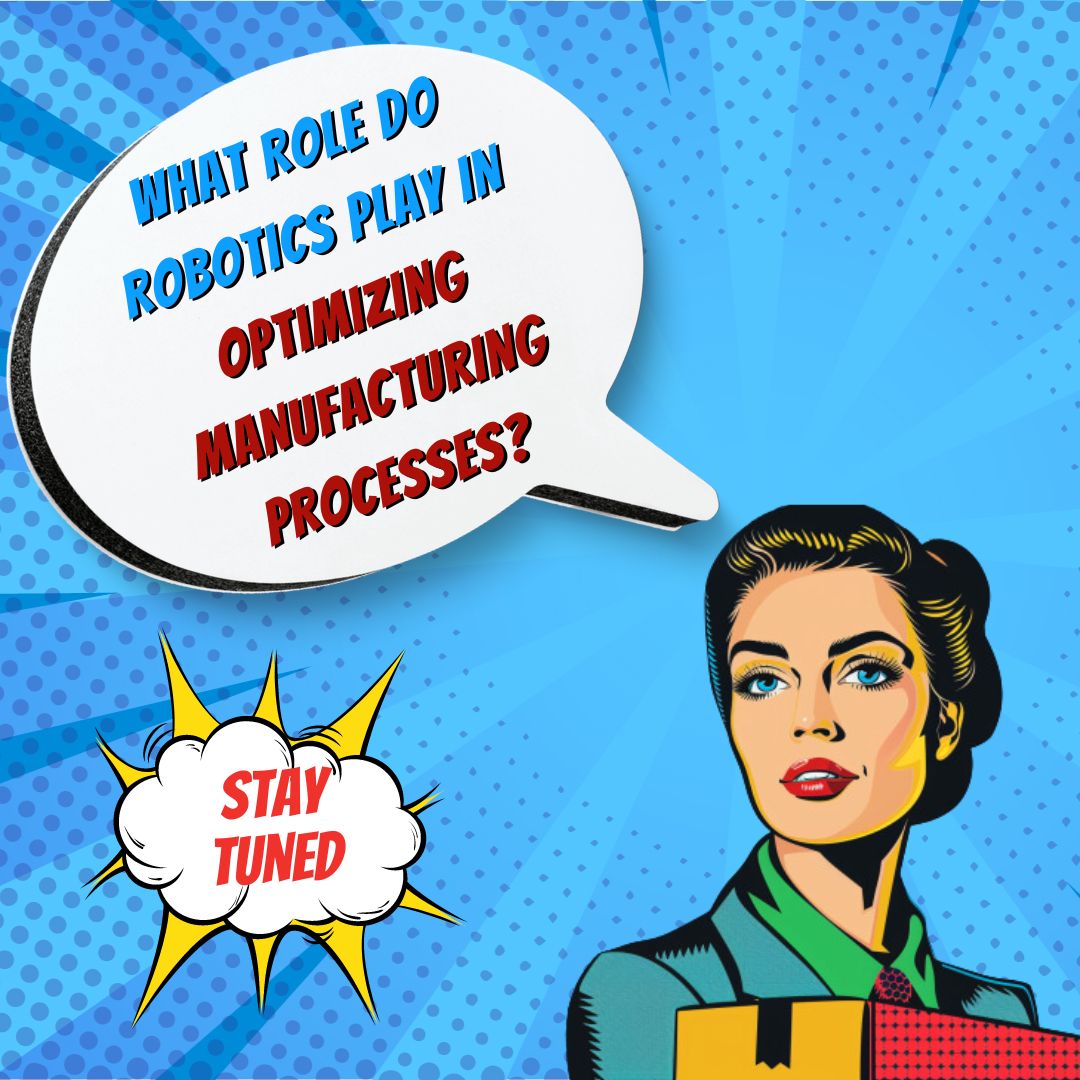
Introduction
Ever wondered how the future of production and delivery looks? Imagine a world where robots and humans work hand in hand, turning the wheels of supply chain and manufacturing processes with unparalleled precision. It's not a scene from a sci-fi movie—it's happening right now, and it's transforming businesses much like yours.
Robotics in Manufacturing and Automation in Supply Chain Management aren't just about doing things faster but doing them smarter. With benefits ranging from doubling down on quality to upping the efficiency without compromising on worker safety, there's a whole universe of opportunities to unpack here.
What's in store for you? Innovative perspectives, modern trends, and solutions designed to stretch your revenue further. You're not just earning more; you're delivering excellence, consistently.
Stick around and I'll walk you through some groundbreaking insights and actionable bits of information that might just be the golden ticket to speeding ahead of the competition. Let's roll up our sleeves and see how your operation can get that high-tech polish. Ready for a tour?

Top Statistics
| Statistic | Insight |
|---|---|
| Global Robotics Market Growth: Expected to grow from $76.6 billion in 2020 to $176.8 billion by 2025, at a CAGR of 18.2% during the forecast period. (Source: MarketsandMarkets) | This sharp rise suggests companies are investing heavily in robotics to stay competitive and modernize their operations. |
| Industrial Robotics Market Share: Dominated the global robotics market in 2020 with a market size of $39.3 billion. (Source: MarketsandMarkets) | Industrial robots are central to manufacturing, showing their critical role in producing goods efficiently. |
| Labor Savings: Use of robotics can help reduce labor costs by up to 80%, leading to significant cost savings for businesses. (Source: Boston Consulting Group) | Money saved here can be reinvested in growth or innovation, making robotics a smart choice for future-facing companies. |
| Increased Productivity: Implementing robotics can lead to a 30% increase in productivity as robots work continuously. (Source: McKinsey & Company) | With no need for breaks, robots are driving companies towards higher output and smoother operations. |
| Collaborative Robotics Growth: Expected to grow at a CAGR of 49.8% between 2020 and 2025. (Source: MarketsandMarkets) | These robots work alongside humans, blending the best of both worlds – human insight with robotic efficiency. |
Robotics in Manufacturing: Precision Meets Productivity
Have you ever watched a robot at work? It's pretty fascinating—they move with such precision and accuracy that it seems like they're performing a well-choreographed dance. This is one of the stellar benefits when we talk about robots in manufacturing. They don't just do things exactly right; they do them quickly and consistently, too. Imagine a factory where robots are weaving in and out, making sure each piece they handle is perfect down to the last millimeter, and they're doing it at breakneck speeds, all day, every day. Plus, they're not just fast and precise; they're strong and careful, keeping our human friends safe from the heavy lifting and hazardous tasks.
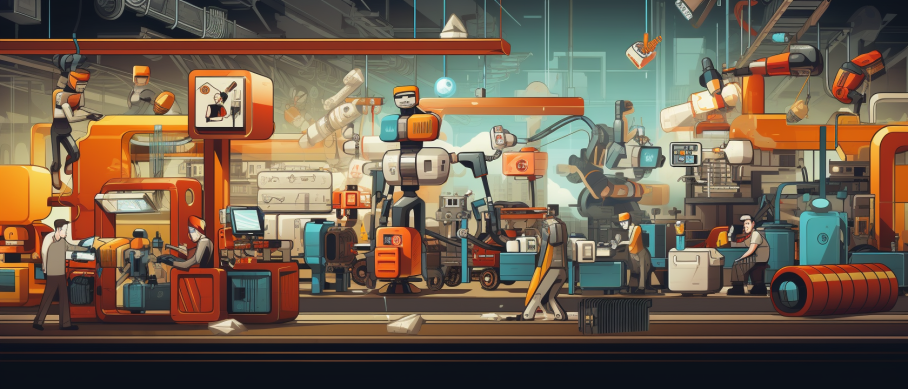
Optimizing the Supply Chain with Automation
Now, what about when you order something online? You click 'buy', and a whole supply chain springs into action. In a warehouse equipped with robots, shelves move, and packages zip around, finding their way into the right boxes for delivery. These automated systems are like the ultimate personal shoppers, but instead of browsing aisles, they're moving everything from electronics to snacks with robotic precision. Inventory management becomes a cakewalk for these metal mavens, and guess what? Your package arrives faster because they've cut down the order fulfillment time. It's like having a genie, but this one's made of wires and steel.
Robotics and Quality Control: Consistency is King
Quality control is where robots really flex their muscles. In quality control processes, it's all about being consistent. Robots are natural-born inspectors; they can examine products all day without losing focus. If something's amiss, they'll spot it immediately, and they keep getting better at it thanks to real-time data analysis. They learn from mistakes just like we do, so the more they work, the less likely they are to let a defective product slip through. And when robots are in charge, the sneaky gremlins of human error don't stand a chance.
Human-Robot Synergy with Collaborative Robots (Cobots)
Think about the last time you had to do something over and over again—mind-numbing, right? This is where our robot buddies, especially collaborative robots or "cobots," come into the picture. Cobots work with humans, taking care of all the dull and strenuous stuff, so people can focus on tasks that need a human touch. It's a bit like having a super-efficient assistant who's always in a good mood. And as we rely more on these machines, we'll also need to learn new skills to keep up. That's a good thing though, as it means we're teaching people to take on more intriguing and complex challenges.

Challenges and Considerations of Implementing Robotics
Okay, robots are amazing, but they're not plug-and-play gizmos. The upfront investment can make you think twice before signing the check. Plus, they have to play nice with all the old systems and that's not always easy. Then there's the people aspect: workers need retraining and upskilling so they don't feel left behind. And let's not forget, robots are connected to the internet, which means we have to watch out for hackers. It's a lot like adopting a pet; it's not just about bringing it home, it's also about caring for it.
The Ascent of Robotics: An AI-Powered Future Awaits
We're just scratching the surface of what robots can do. With advances in artificial intelligence (AI) and machine learning (ML), they're becoming brainier by the minute. Imagine self-driving trucks delivering goods or robots cooking up a storm in kitchens—they'll be everywhere. It's not just about who can build the best robot; it's about who can teach them the smartest tricks. The potential savings and the sky-high efficiency are set to transform every industry you can think of, from baking bread to building skyscrapers.
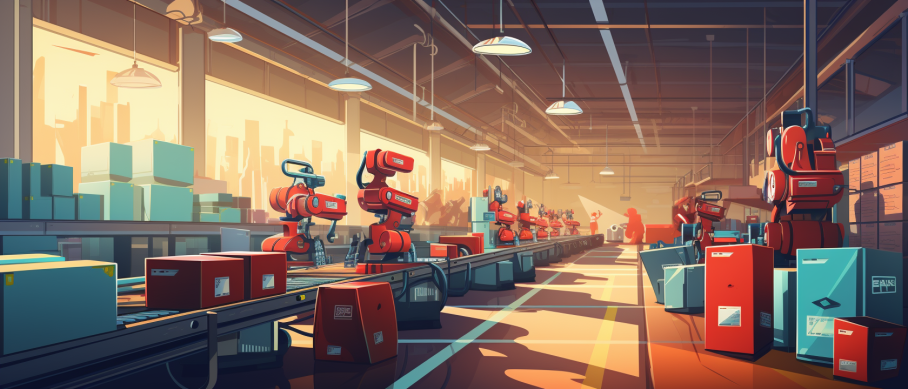
AI Marketing Engineers Recommendation
Recommendation 1: Invest in Collaborative Robots (Cobots): Leverage cobots to enhance precision and flexibility within your production lines. You see, these are not your typical robots. They're designed to work alongside humans, adapting to various tasks through simple programming. The data backs up their worth: Cobots are projected to account for 34% of industrial robot sales by 2025, according to the International Federation of Robotics. By incorporating cobots, you're not just keeping up with a trend; you're making an investment in the human-robot synergy that can dramatically push your productivity to new heights.
Recommendation 2: Implement Advanced Robotics for Data-Driven Supply Chain Optimization: Data is like the lifeblood of the modern business world, right? Now, imagine combining the analytical prowess of advanced robotics with the massive amount of data in your supply chain operations. These robots do more than lift and shift; they gather and analyze data to optimize workflows, predict maintenance, and ensure inventory accuracy. Deloitte Insights reveals that supply chain leaders are enhancing enterprise intelligence by integrating such smart machines. Now, why wouldn't you want that kind of intelligence driving your business forward?
Recommendation 3: Utilize Robotic Process Automation (RPA) for Back-Office Tasks: Ever get bogged down with paperwork when all you want to do is focus on growing your business? Enter RPA. This isn't just about getting robots on the factory floor; it's also about streamlining those repetitive, time-consuming back-office tasks. RPA tools can handle data entry, process standard transactions, and manage records without breaking a sweat, 24/7. This adoption can lead to customer service improvement since the report by Grand View Research states that the RPA market size will reach $3.97 billion by 2025. Imagine allocating human creativity to where it truly matters while letting robots take care of the grunt work.
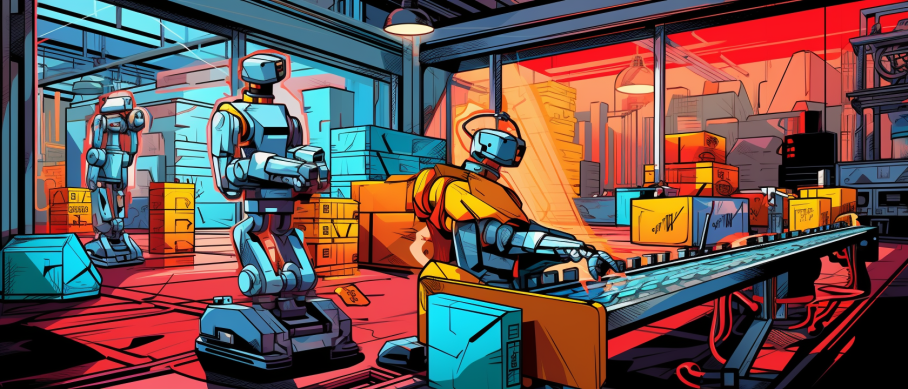
Relevant Links
Unlocking Robotics in Business: A High-Precision Revolution
- Precision and Productivity: Robotics Changing the Game in Manufacturing
Transform Your Supply Chain with Advanced Automation
- Warehouse Wonders: Optimizing Logistics with Robot Assistance
Quality Beyond Measure: The Role of Robotics in QC
- Consistency is King: How Robots Reinvent Quality Control
Mastering Human-Robot Collaboration in the Workplace
- Cobots in Action: The Future of Collaborative Work
Navigating the Robotics Revolution in Industry
- The Age of Robotic Mastery: Calculating the Cost for Your Business
Conclusion
So, let's put this into perspective, shall we? We've taken quite the journey looking at robotics and their ever-expanding role in the world of supply chain and manufacturing. They're not just pieces of tech that whir and buzz on factory floors; they're shaping the way products are made and moved around the globe. With their precision and speed, they bring to the table a kind of choreography that humans alone could never manage. They're the heavy lifters, the tireless workers, keeping people safer by taking on jobs that are too repetitive or downright dangerous.
And what about the way they manage to keep shelves stocked and orders flowing? It's like having a crystal ball that shows you exactly what you need, when you need it – thanks to the ninja-like efficiency of robotics in inventory management. We also can't forget those quality control superpowers they have, catching imperfections and ensuring every product meets the mark.
Now, it's not all plain sailing; challenges do exist. We're talking about a hefty price tag for starters, the puzzle of getting them to play nice with existing systems, and making sure we keep our cybersecurity game strong.
But the potential is just too great to ignore. Imagine, as our world becomes more connected and we keep pushing the boundaries of AI and ML, what our robotic companions will be able to achieve. The cost savings, the leaps in efficiency—it's all there for the taking.
Ready to see what robotics could do for your operations? Think about how they could transform your day-to-day and maybe even give your workers a chance to learn some fancy new skills. Remember, it's not about replacing humans; it's about collaboration. Why not start that conversation today and see where it could take you? The future is knocking; let's open the door.
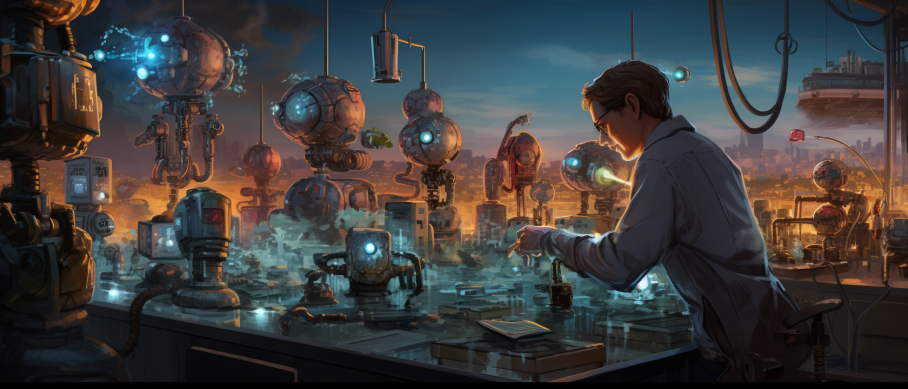
FAQs
Question 1: What is the role of robotics in supply chain and manufacturing processes?
Answer: Robotics plays a significant role in supply chain and manufacturing processes by automating repetitive, dangerous, or complex tasks, increasing efficiency, reducing human error, and enhancing productivity.
Question 2: How do robots improve efficiency in manufacturing?
Answer: Robots can work 24/7 with consistent speed and accuracy, reducing production time and increasing output. They can perform multiple tasks simultaneously and integrate with other systems, leading to a more efficient and optimized manufacturing process.
Question 3: What are the benefits of using robots in supply chain management?
Answer: Robots can improve supply chain management by enhancing inventory tracking, order fulfillment, and delivery processes. They can also optimize warehouse layouts, reduce human error, and improve overall supply chain visibility.
Question 4: How do robots enhance worker safety in manufacturing environments?
Answer: Robots can perform dangerous or hazardous tasks, reducing the risk of injury to human workers. This includes handling heavy objects, working with hazardous materials, and operating in extreme temperatures or environments.
Question 5: What are the advanced robotics technologies used in manufacturing?
Answer: Advanced robotics technologies include collaborative robots (cobots), artificial intelligence (AI), machine learning (ML), and the Internet of Things (IoT). These technologies enable robots to work alongside humans, learn from data, and communicate with other systems for enhanced efficiency and productivity.
Question 6: What are the practical considerations for implementing robotics in manufacturing?
Answer: Implementing robotics in manufacturing requires careful planning, including assessing the current processes, identifying areas for improvement, and selecting the right robots and technologies. It also involves training employees, integrating robots with existing systems, and ensuring proper maintenance and support.
Question 7: How can small and medium-sized enterprises (SMEs) benefit from robotics?
Answer: SMEs can benefit from robotics by automating repetitive tasks, reducing labor costs, and increasing productivity. Robotics can also help SMEs compete with larger companies by enabling them to produce high-quality products at a lower cost.
Question 8: What are the challenges associated with integrating robotics in supply chain and manufacturing processes?
Answer: Challenges include the high initial investment cost, the need for skilled personnel to operate and maintain robots, and the potential resistance from workers who may fear job displacement. There may also be challenges in integrating robots with existing systems and processes.
Question 9: How can companies ensure a smooth transition to robotics in their supply chain and manufacturing processes?
Answer: Companies can ensure a smooth transition by conducting a thorough assessment of their current processes, selecting the right robots and technologies, providing proper training to employees, and implementing a phased approach to integration. It's also essential to communicate the benefits of robotics to employees and address any concerns they may have.
Question 10: What are the future trends and developments in robotics for supply chain and manufacturing processes?
Answer: Future trends and developments include the increased use of AI and ML to enable robots to learn from data and make decisions, the integration of 5G and edge computing for real-time data processing, and the development of more advanced sensors and vision systems for improved robot perception and navigation.

Academic References
- Jawahir, A. K. S., Wan, S., Xu, X., & Zhu, Z. (2019). Robotics in Logistics and Manufacturing: A Review of Applications and Trends. International Journal of Advanced Robotic Systems, 16(3).This scholarly article delves into the significant enhancements that robotics have brought to logistics and manufacturing. The authors emphasize the productivity leaps, cost savings, and safety improvements, while also mulling over the hurdles that need to be jumped for robotics to really take root.
- Mahajan, B. P., & Nimbarte, A. D. (2018). Impact of Robotics on Supply Chain Management: A Literature Review and Future Research Agenda. International Journal of Production Research, 56(1-2), 509-529.Ever wondered how robotics could really shake up supply chain management? Mahajan and Nimbarte have, and they've put together this literature review that tackles not just the benefits but also floats ideas about where future research might point us toward the next big breakthrough.
- Goh, C. M., & Heng, H. (2014). Robotics in Manufacturing: A Review of Industrial Robots and Emerging Enabling Technologies. International Journal of Advanced Manufacturing Technology, 73(5-8), 655-670.When it comes to manufacturing, robots are hardly rookies. But Goh and Heng's comprehensive review gives you the grand tour—from the established roles of industrial robots to the thrilling edge of what's coming next with sensors, machine learning, and AI.
- van der Vorst, M. J. T. M., Cruz-Machado, V., & Gomes, C. F. (2019). The Impact of Robotics on Supply Chain Performance: A Systematic Literature Review. International Journal of Physical Distribution & Logistics Management, 49(4), 391-418.Van der Vorst and colleagues have scoured through the literature to piece together how robotics are transforming supply chain performance. What's the real score? They've sifted through the data to offer insights into how the bots are making things faster, smarter, and more customer-friendly.






